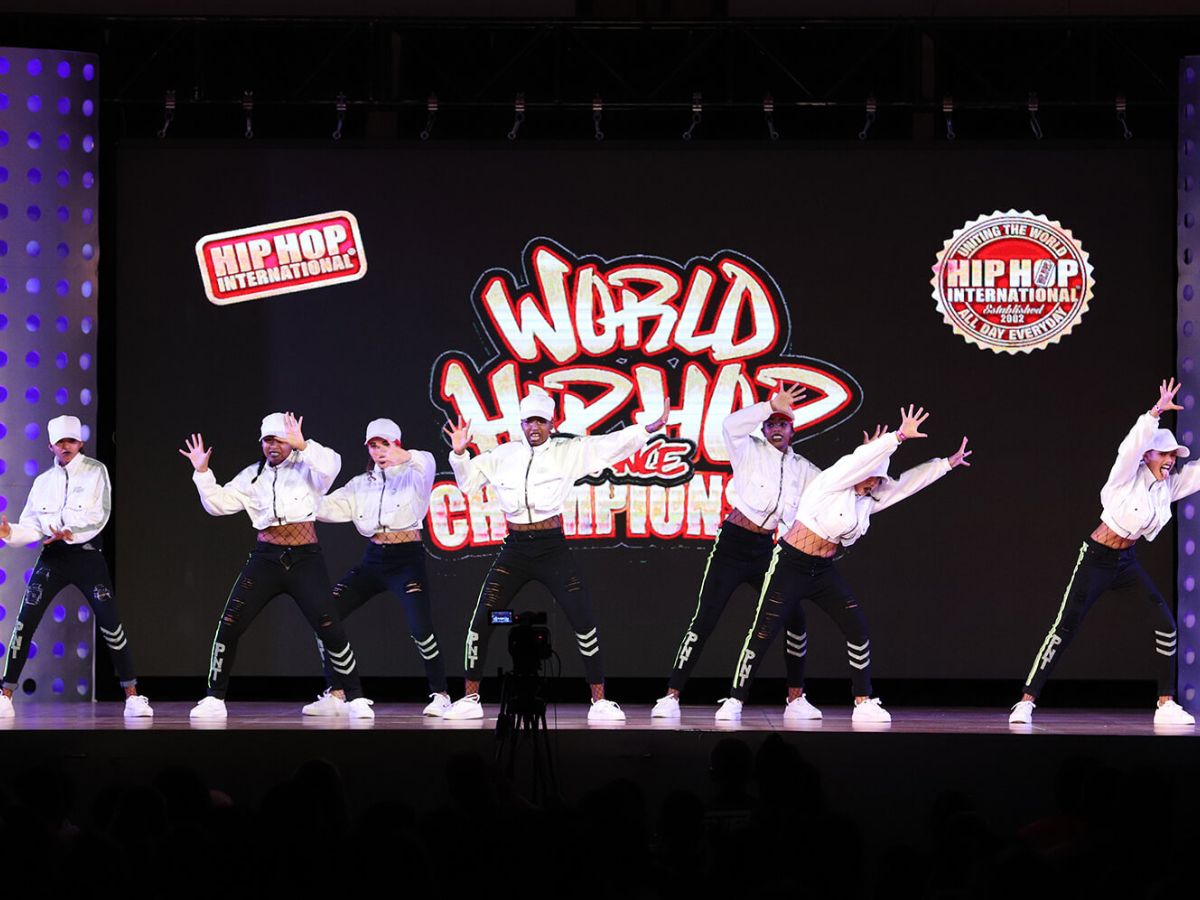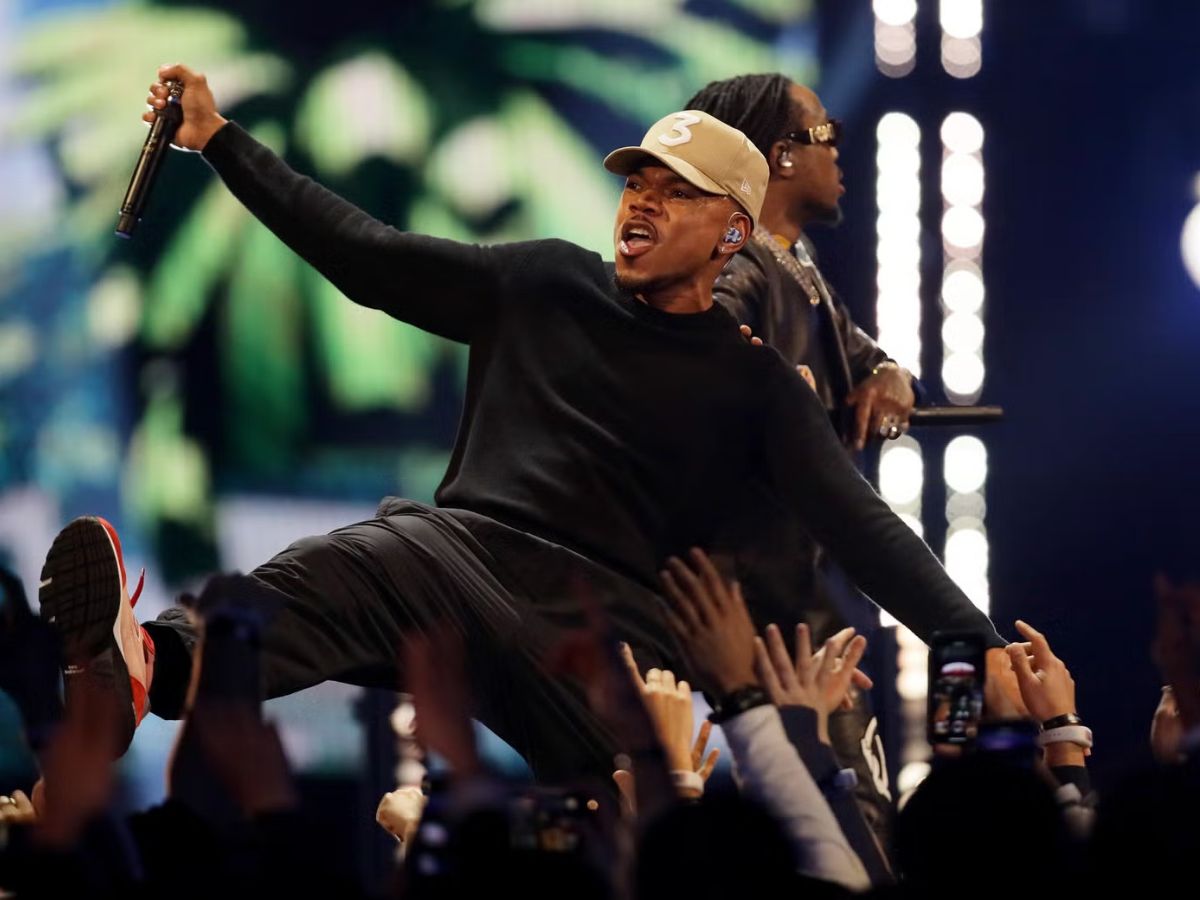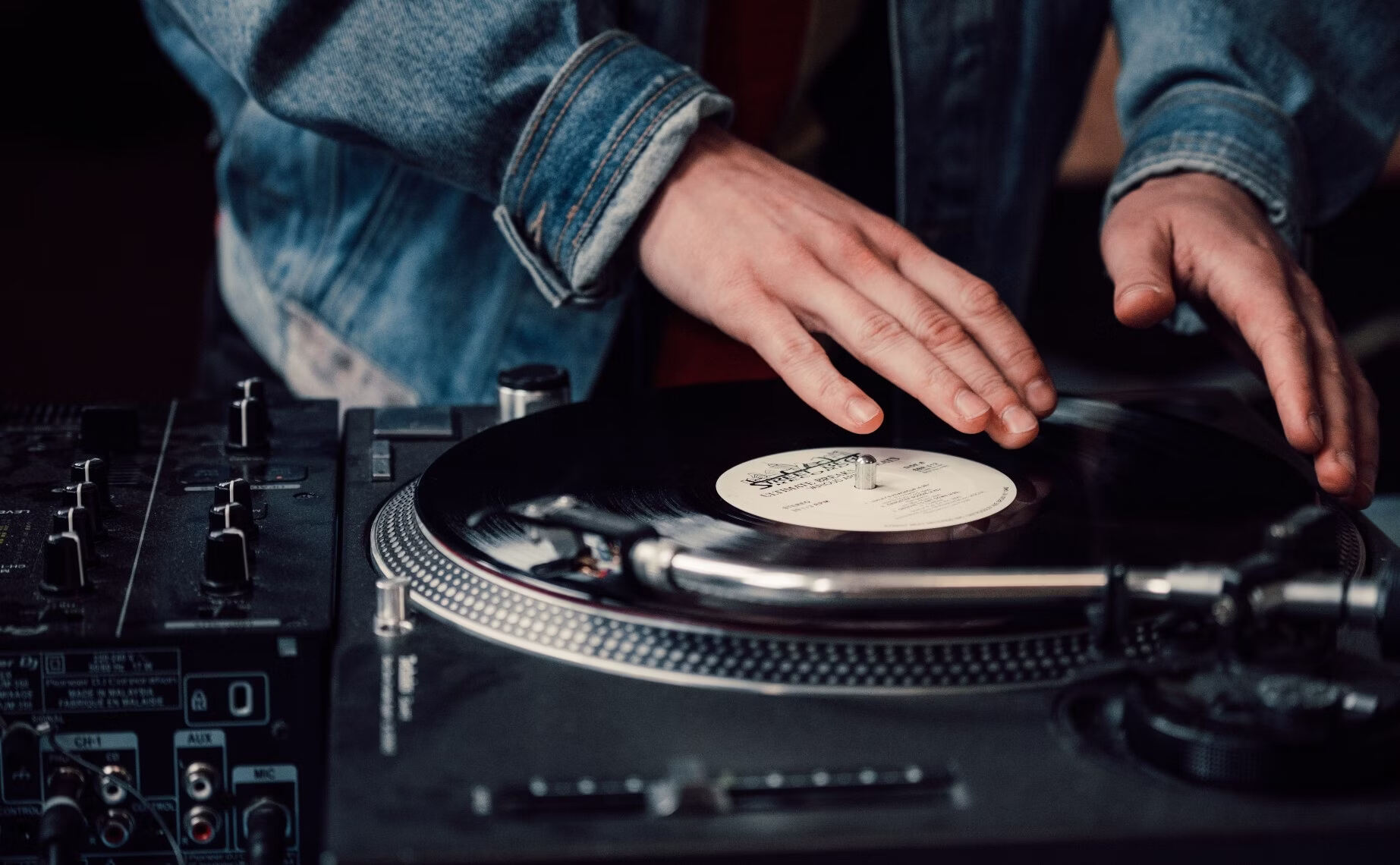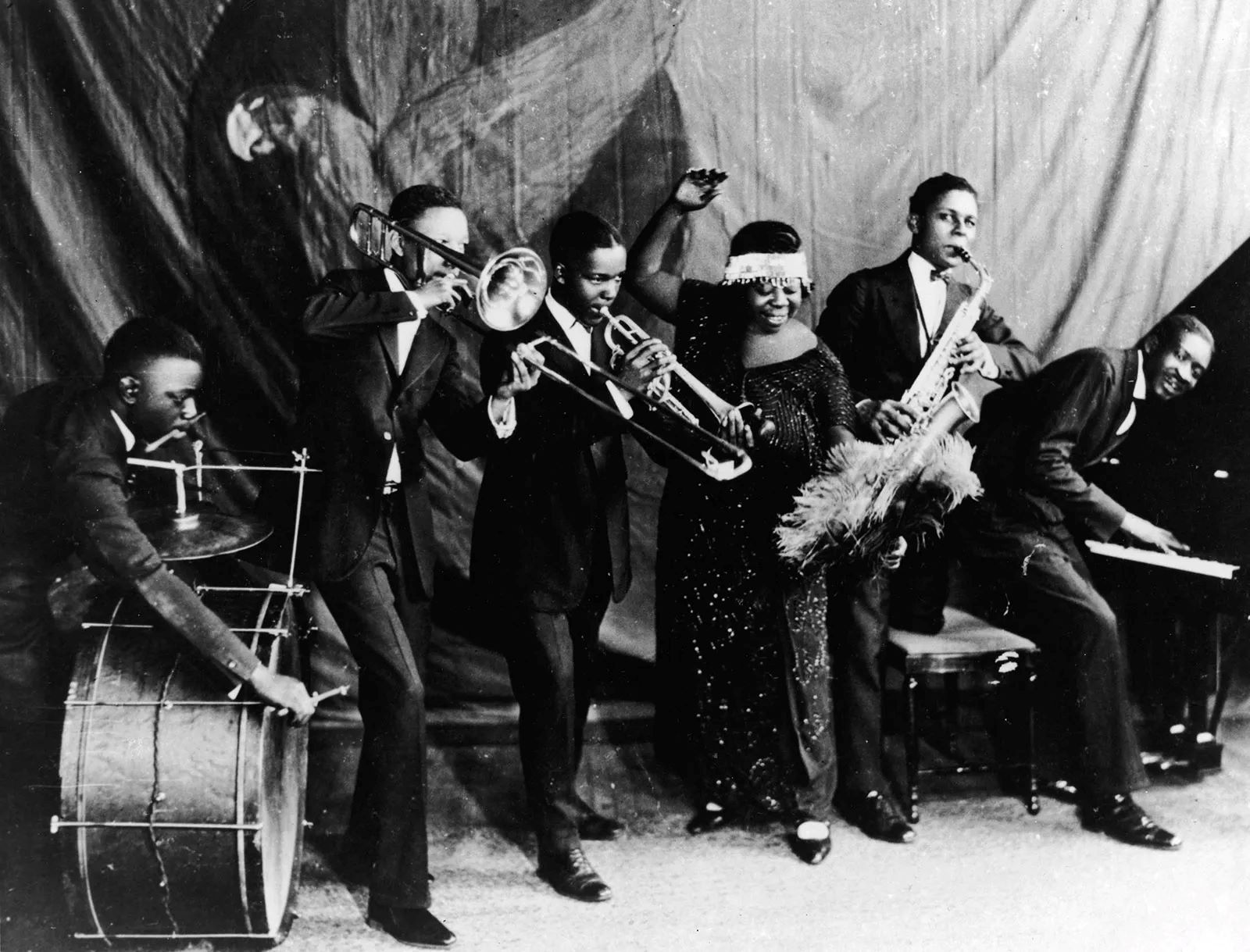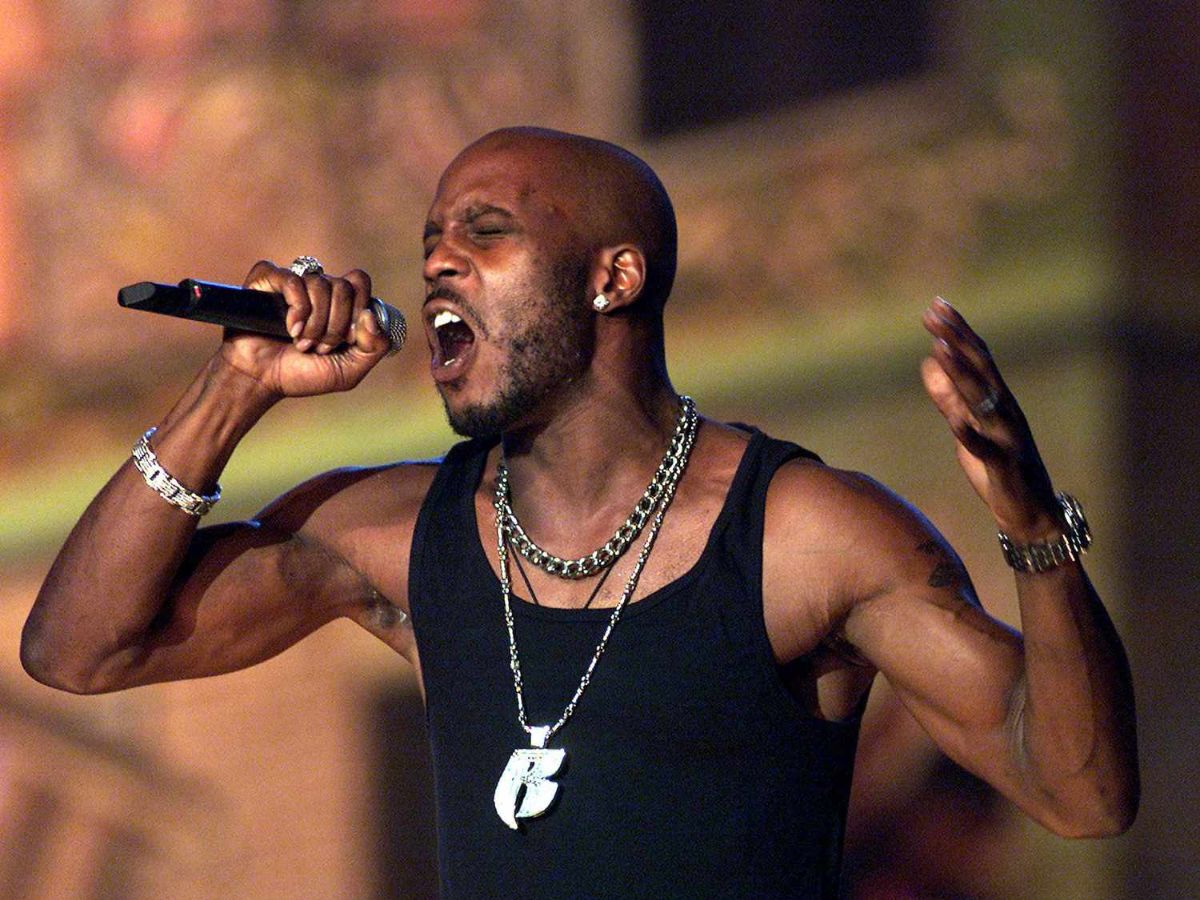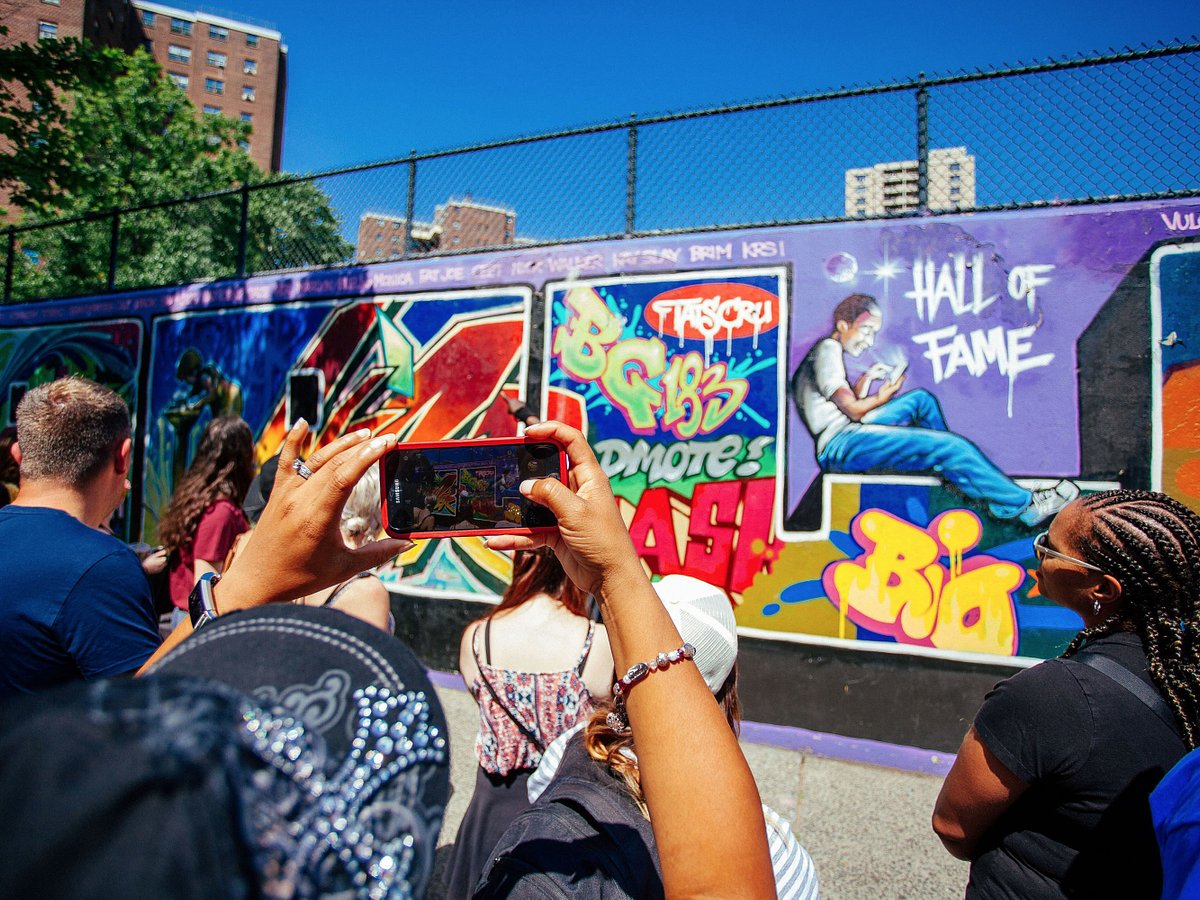

Hip Hop
What City Did Hip Hop Originated
Modified: March 3, 2024
Learn about the birthplace of hip hop and its origins in this city. Discover the rich culture and history that shaped the hip hop movement.
(Many of the links in this article redirect to a specific reviewed product. Your purchase of these products through affiliate links helps to generate commission for AudioLover.com, at no extra cost. Learn more)
Table of Contents
Introduction
Hip Hop, a cultural movement that emerged in the 1970s in the South Bronx, has since become a global phenomenon. It encompasses various elements, including music, dance, fashion, art, and language, making it a rich and diverse subculture. Hip Hop not only revolutionized the music industry but also provided a platform for marginalized communities to express themselves and address social and political issues.
With its origins deeply rooted in African American and Afro-Caribbean traditions, Hip Hop quickly gained popularity among youth in urban neighborhoods. It offered an outlet for creativity and self-expression, while also serving as a form of resistance against the social and economic challenges faced by these communities.
This article will delve into the origins of Hip Hop, exploring its connections to the South Bronx and the influential figures who shaped its evolution. We will also examine the key elements of Hip Hop culture, including DJing, MCing, breaking, and graffiti. By understanding the foundations and evolution of this vibrant culture, we can better appreciate its impact on contemporary music and society.
Origins of Hip Hop
The origins of Hip Hop can be traced back to the South Bronx in New York City during the 1970s. At this time, the neighborhood was plagued by poverty, crime, and social unrest. In the midst of this turbulent environment, a cultural movement began to emerge, providing a creative outlet and a sense of empowerment for the youth.
The origins of Hip Hop can be attributed to various factors, including the influence of African and Afro-Caribbean musical traditions, the decline of disco, and the availability of affordable music technology. The fusion of these elements gave birth to a new form of music that would come to define an entire generation.
One significant aspect of Hip Hop’s origins is the block parties that took place in the South Bronx. Influenced by Jamaican sound systems, these parties featured DJs who played records and mixed beats to create a vibrant and energetic atmosphere. The powerful basslines and rhythmic beats provided the foundation for the emerging Hip Hop sound.
Another essential element in the development of Hip Hop was the practice of “sampling,” where DJs would use snippets of existing songs to create new compositions. This technique allowed for innovative remixes, and it became a trademark of Hip Hop production.
Furthermore, the lyrical storytelling tradition of African griots and the expressive nature of African American vocal traditions like blues and jazz played a significant role in shaping the verbal aspect of Hip Hop. This led to the development of MCing (Master of Ceremonies) or rapping, where artists would deliver rhythmic and poetic verses over the beats created by DJs.
The origins of Hip Hop are deeply intertwined with the experiences of marginalized communities in urban areas. It provided a voice for the disenfranchised and gave them a platform to express their struggles, aspirations, and cultural identities. Through this art form, these communities empowered themselves and created a unique cultural movement that would resonate globally.
The South Bronx Connection
The South Bronx holds a special place in the history of Hip Hop as the birthplace and epicenter of the cultural movement. This neighborhood, located in New York City, was a hotbed of creativity and innovation during the 1970s when Hip Hop began to flourish.
The South Bronx in the 1970s was characterized by high levels of poverty, crime, and neglect. It was also a place where diverse communities, primarily African American and Latino, coexisted and shared common experiences. The challenging social and economic conditions of the neighborhood became the fuel that ignited the creative fire of Hip Hop.
One crucial aspect of the South Bronx connection to Hip Hop is the block parties that took place in the area. These parties served as the breeding ground for the development of deejaying and breakdancing, two integral elements of the culture. DJs like Kool Herc and Grandmaster Flash would set up their sound systems in local parks, bringing together people from different backgrounds to enjoy music, dance, and community. These block parties became a sanctuary for creativity and self-expression.
In addition to block parties, the South Bronx played a crucial role in the emergence of graffiti art as an essential element of Hip Hop culture. Spray-painted murals and tags began to cover the walls of buildings and subway trains, serving as visual representations of the neighborhood’s vibrancy and the voices of its inhabitants.
The South Bronx’s connection to Hip Hop is also evident in the powerful and socially conscious lyrics produced by artists hailing from the neighborhood. Rappers like KRS-One, Afrika Bambaataa, and Big Punisher used their verses to shed light on the social issues and realities faced by those living in the South Bronx and beyond.
Furthermore, the South Bronx provided a fertile ground for the birth of influential Hip Hop collectives and crews like the Zulu Nation and the Cold Crush Brothers. These groups brought together talented artists and individuals who contributed to the evolution and spread of the culture.
The South Bronx’s impact on Hip Hop cannot be overstated. It served as a catalyst, setting the stage for the global phenomenon that Hip Hop has become. The resilience, creativity, and sense of community fostered within the South Bronx laid the foundation for a cultural movement that continues to inspire and influence generations of artists and enthusiasts worldwide.
Influential Figures in Hip Hop Culture
Hip Hop culture has been shaped and driven by a multitude of influential figures who have left a lasting impact on the movement. These individuals, through their music, art, activism, and entrepreneurial spirit, have contributed to the growth and evolution of Hip Hop in diverse ways. Let’s explore some of the most influential figures in Hip Hop culture:
1. Afrika Bambaataa: Known as the “Godfather of Hip Hop,” Afrika Bambaataa was a pioneer in the early days of the movement. As a DJ and founder of the Zulu Nation, he not only introduced the world to new sounds and musical styles but also promoted unity, peace, and social consciousness within the Hip Hop community.
2. Grandmaster Flash: A highly skilled DJ and innovator, Grandmaster Flash revolutionized the art of deejaying. He developed techniques such as backspin, scratching, and blending records, shaping the sound of Hip Hop music. His contributions to the genre cannot be overstated.
3. Run-DMC: This legendary Hip Hop trio consisting of Joseph “Run” Simmons, Darryl “DMC” McDaniels, and Jason “Jam Master Jay” Mizell played a pivotal role in bringing Hip Hop into the mainstream. Their fusion of rap lyrics with rock-infused beats paved the way for future artists and introduced a new era of Hip Hop to a wider audience.
4. Queen Latifah: As one of the first female MCs to achieve widespread recognition, Queen Latifah broke barriers and paved the way for women in Hip Hop. Her empowering lyrics, strong stage presence, and successful transition into acting and entrepreneurship make her an iconic figure in the culture.
5. Tupac Shakur: Known for his passionate and introspective lyrics, Tupac Shakur used his platform to shed light on social and political issues affecting marginalized communities. His impact on Hip Hop extends beyond music, as he became an influential figure in the fight against social injustice and inequality.
6. Jay-Z: With his vast musical catalog and successful ventures in the business world, Jay-Z has solidified his place as one of the most influential figures in Hip Hop. He has not only achieved immense commercial success but has also used his platform to advocate for racial equality and social change.
These are just a few examples of the influential figures who have shaped the Hip Hop culture. From visionary musicians and talented DJs to innovative producers and socially conscious artists, their contributions have propelled Hip Hop from its humble beginnings to a global cultural phenomenon.
The Rise of DJing
One of the fundamental pillars of Hip Hop culture is DJing, which played a crucial role in the early development and continued evolution of the movement. DJs, often referred to as turntablists or selectors, are responsible for creating and manipulating the beats and sounds that form the foundation of Hip Hop music.
The rise of DJing can be traced back to the South Bronx in the 1970s, where block parties served as incubators for this emerging art form. DJs like Kool Herc, Grandmaster Flash, and Afrika Bambaataa pioneered new techniques and approaches to music mixing, which paved the way for the establishment of Hip Hop as a distinct genre.
One of the key innovations in DJing was the use of two turntables and a mixer. This allowed DJs to seamlessly transition between different records, creating a continuous flow of music and rhythm. The technique of “mixing” involved beatmatching, where DJs matched the tempos of two records and overlaid different elements, such as drum breaks or vocal snippets, to create a unique and dynamic sound.
As DJing gained popularity, DJs began to incorporate other creative techniques into their performances. Scratching, a technique pioneered by Grandmaster Flash and further popularized by DJ Kool Herc, involved manipulating the vinyl record on the turntable to create rhythmic and percussive sounds. This innovative approach to vinyl manipulation became a trademark of Hip Hop DJing, adding a distinctive and expressive element to the music.
The rise of DJ battles and competitions further propelled the art of DJing. These events showcased the skills and creativity of DJs, who competed against each other in live performances, demonstrating their ability to mix, scratch, and manipulate records in real-time. These battles not only provided a platform for DJs to showcase their talents but also contributed to the evolution and refinement of DJ techniques.
With the advancement of technology, the art of DJing has expanded beyond vinyl records and turntables. Digital technology and software have allowed for more flexibility and creativity in DJ performances, with the ability to manipulate and remix music in various ways. However, the essence of DJing remains rooted in the foundational techniques developed in the early days of Hip Hop.
Today, DJing continues to play a central role in Hip Hop culture. DJs are not only integral to live performances and parties but also serve as tastemakers and curators of music, introducing audiences to new sounds and artists. The innovative and creative spirit that underpins DJing remains a driving force in the ever-evolving world of Hip Hop.
MCing and Rapping in Hip Hop
MCing, also known as Master of Ceremonies, is a fundamental element of Hip Hop culture that is often synonymous with rapping. MCs are the lyrical storytellers who, through their rhythmic verses and expressive delivery, give voice to the experiences, emotions, and narratives of the Hip Hop community.
The roots of MCing can be traced back to African and African American oral traditions, where storytelling and spoken word performances were integral parts of cultural expression. In Hip Hop, MCs use their lyrics and flow to convey messages, share personal stories, tackle social issues, and engage audiences with their verbal dexterity.
Rapping, which refers to the delivery of spoken lyrics in a rhythmic manner, is a core component of MCing. Rappers use their voice as an instrument, utilizing rhyme schemes, wordplay, and metaphors to create captivating and memorable verses.
MCing and rapping became prominent in the early days of Hip Hop during block parties and park jams in the South Bronx. MCs would take turns on the microphone, engaging the crowd and delivering their lyrical prowess over beats provided by DJs. The improvisational nature of these performances created a dynamic and interactive experience for both the MCs and the audience.
As Hip Hop gained popularity, the art of MCing expanded beyond freestyle performances at parties. MCs began to write and record their lyrics, allowing them to reach a wider audience through recorded music. The emergence of recording studios and labels dedicated to Hip Hop facilitated the growth of MCing as an art form and provided MCs with opportunities to release their music.
In addition to freestyle rapping and recorded music, battles and cyphers became important platforms for MCs to showcase their skills and lyrical prowess. MC battles involve two or more MCs engaging in a competitive exchange of rhymes, aiming to outwit and outperform their opponents. These battles not only highlight the technical ability of MCs but also serve as a way to demonstrate their creativity and improvisation.
Throughout the years, MCing has evolved and diversified, encompassing various styles and subgenres within Hip Hop. From the politically charged lyrics of artists like Public Enemy and N.W.A. to the introspective storytelling of Tupac Shakur and Kendrick Lamar, MCs have used their platform to address social issues, share personal experiences, and challenge the status quo.
MCing and rapping continue to play a vital role in Hip Hop culture. They are the vehicles through which artists express their identities, share their truths, and connect with audiences worldwide. With their powerful and influential voices, MCs have the ability to inspire, educate, and provoke thought, making MCing an essential and respected element of the Hip Hop movement.
Breaking and the Art of Dance
Breaking, also known as breakdancing, is a dynamic and acrobatic form of dance that emerged alongside Hip Hop culture in the 1970s. It quickly became one of the most iconic and recognizable elements of the movement, showcasing athleticism, creativity, and self-expression.
Breaking originated in the South Bronx, New York City, where young people, inspired by a variety of dance influences, began to develop a distinct style that would become synonymous with Hip Hop. Dance styles such as the Lindy Hop, the Charleston, and funk styles like the Electric Boogaloo and the Robot contributed to the foundation of breaking.
Breaking is characterized by its acrobatic moves, intricate footwork, freezes, and power moves. B-boys and B-girls, the dancers who practice breaking, display impressive physical strength, agility, and rhythm as they execute spins, flips, head spins, and intricate footwork combinations.
Breaking is not just a display of physical prowess; it also serves as a form of self-expression and storytelling. B-boys and B-girls use their movements to convey narratives, emotions, and personal experiences. The dance battles and cyphers, where dancers compete and showcase their skills, allow them to engage in a lyrical conversation through movement.
Breaking is not limited to dance battles and competitions; it is also a social dance form that fosters community and camaraderie among dancers. The cypher, a circle where dancers take turns showcasing their moves and improvising to the music, is a central element of the breaking culture. It allows for individual expression while also promoting unity, respect, and support within the dance community.
Over the years, breaking has evolved, with dancers continuously pushing the boundaries of what is thought possible. The influence of other dance styles, such as martial arts, gymnastics, and contemporary dance, has contributed to the evolution of breaking, adding new elements and techniques to the dance form.
Breaking has gained global recognition and has become an integral part of popular culture, with its vibrant and energetic performances captivating audiences around the world. It has influenced other dance forms, music videos, commercials, and even movies, showcasing the enduring influence and appeal of breaking.
Today, breaking continues to evolve and thrive as an integral element of Hip Hop culture. It serves as a testament to the creativity, athleticism, and cultural significance of dance within the movement. Breaking not only provides a platform for self-expression and individual skill, but it also represents the unity and community that Hip Hop embodies.
Graffiti and Hip Hop’s Visual Element
Graffiti art is an essential visual element of Hip Hop culture, providing a distinct and vibrant form of self-expression. Originating alongside the music and dance of Hip Hop in the South Bronx during the 1970s, graffiti quickly became an integral part of the movement, adding a visual layer to the narratives and messages conveyed by artists.
Graffiti emerged as a response to the social and economic challenges faced by marginalized communities in urban areas. It served as a way for individuals to reclaim their spaces and make their voices heard by transforming public walls, subway cars, and other surfaces into canvases for artistic expression.
Graffiti art in Hip Hop is characterized by its bold, colorful lettering, intricate designs, and often intricate characters. These pieces can be found in public spaces, abandoned buildings, and train yards, showcasing the creativity and technical skill of the artists.
The art of graffiti goes beyond mere tagging or vandalism; it is a complex and highly skilled art form. Graffiti artists, also known as writers or bombers, develop their own unique styles and signatures, often incorporating elements of calligraphy, typography, and street art techniques. They use various tools, such as spray paint, markers, and stencils, to create their works.
Graffiti art in Hip Hop is not only visually striking but also carries socio-political messages and reflects the experiences and aspirations of the communities from which it emanates. It serves as a visual representation of the culture, addressing issues of identity, resistance, and social commentary.
Moreover, graffiti also plays a significant role in the documentation of Hip Hop’s history and evolution. Pieces created by artists in the 1970s and 1980s serve as important artifacts, capturing the spirit and energy of the early days of the movement. Many renowned graffiti artists have become influential figures in the art world, blurring the lines between street art and mainstream art forms.
However, it’s important to note that the legality of graffiti varies from place to place. While some works are celebrated as artistic expressions, others are deemed vandalism by local authorities. This complex relationship between graffiti art and the law adds another layer of intrigue and controversy to the art form.
Today, graffiti art continues to thrive within Hip Hop culture, both on the streets and in galleries and museums around the world. It remains an integral part of the visual landscape of Hip Hop, preserving its rebellious, creative, and unapologetic spirit.
Conclusion
Hip Hop, with its origins deeply rooted in the South Bronx of the 1970s, has risen to become a global cultural phenomenon. It is a rich tapestry of music, dance, fashion, art, and language that continues to captivate and inspire audiences worldwide. The key elements of Hip Hop, including DJing, MCing, breaking, and graffiti, have shaped the culture and contributed to its enduring appeal.
From the block parties in the South Bronx to the stages of international music festivals, Hip Hop has transcended boundaries and provided a platform for marginalized communities to express themselves and share their stories. The powerful beats and rhythms produced by DJs, the lyrical prowess and storytelling of MCs, the acrobatic movements of breakdancers, and the vibrant graffiti art on city walls all combine to create a dynamic and multi-faceted art form.
Hip Hop has not only revolutionized the music industry but has also been a vehicle for social and political change, addressing important issues and giving voice to those who have been marginalized. It celebrates diversity, encourages individuality, and fosters a sense of belonging and community.
As the culture continues to evolve, Hip Hop remains deeply rooted in its origins. It is a powerful force that both reflects and shapes society, influencing fashion, language, and popular culture. Hip Hop has defied boundaries and stereotypes, allowing people from all walks of life to come together and connect through the universal language of music and art.
In conclusion, Hip Hop is more than just a genre of music; it is a cultural movement that has permeated every facet of our society. Its origins in the South Bronx and its global reach highlight the resilience, creativity, and transformative power of marginalized communities. As we continue to embrace Hip Hop, let us appreciate and celebrate its diverse elements and the influential figures who have propelled it forward. Hip Hop is a testament to the strength of human creativity and the ability of art to inspire, unite, and empower.





